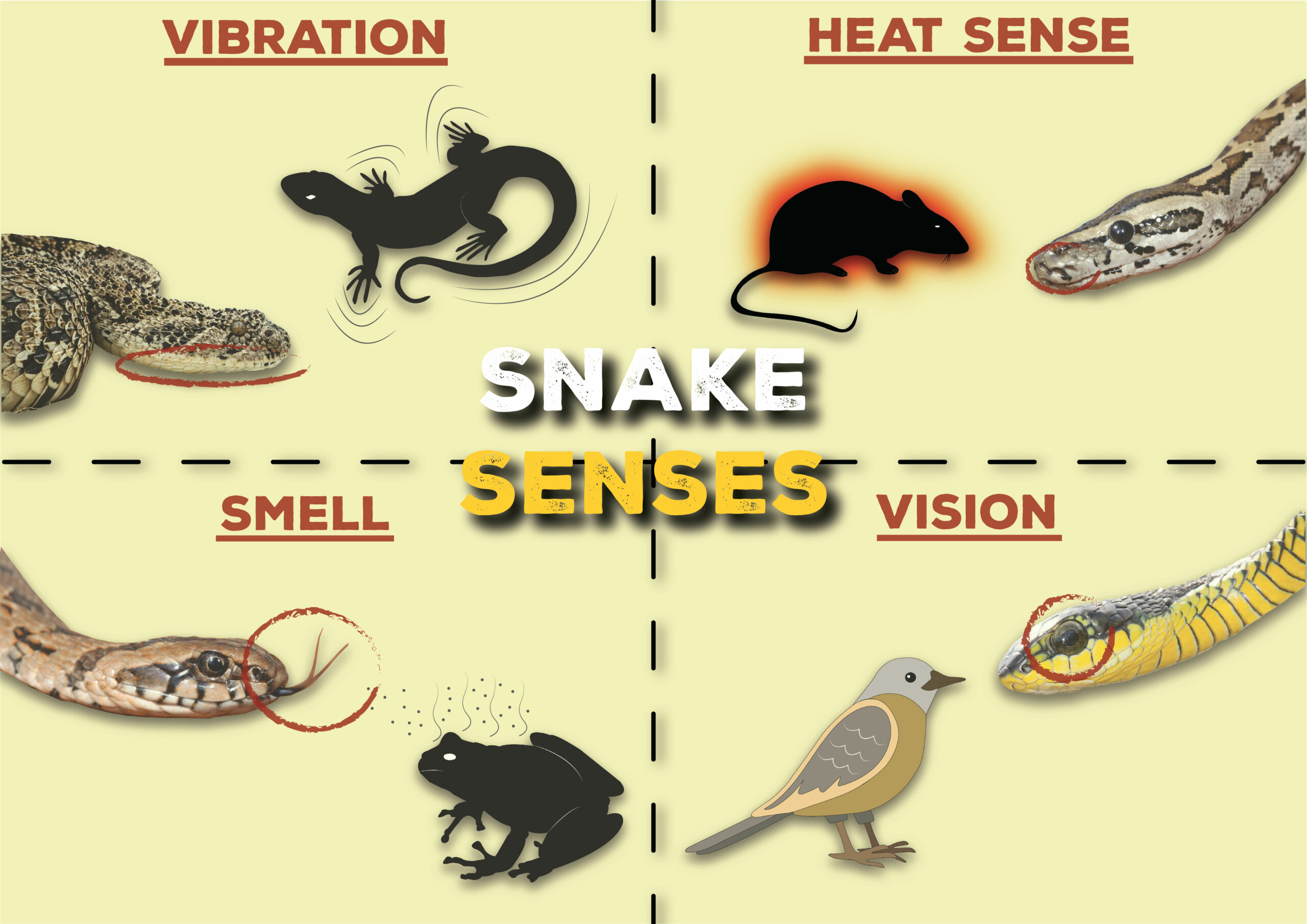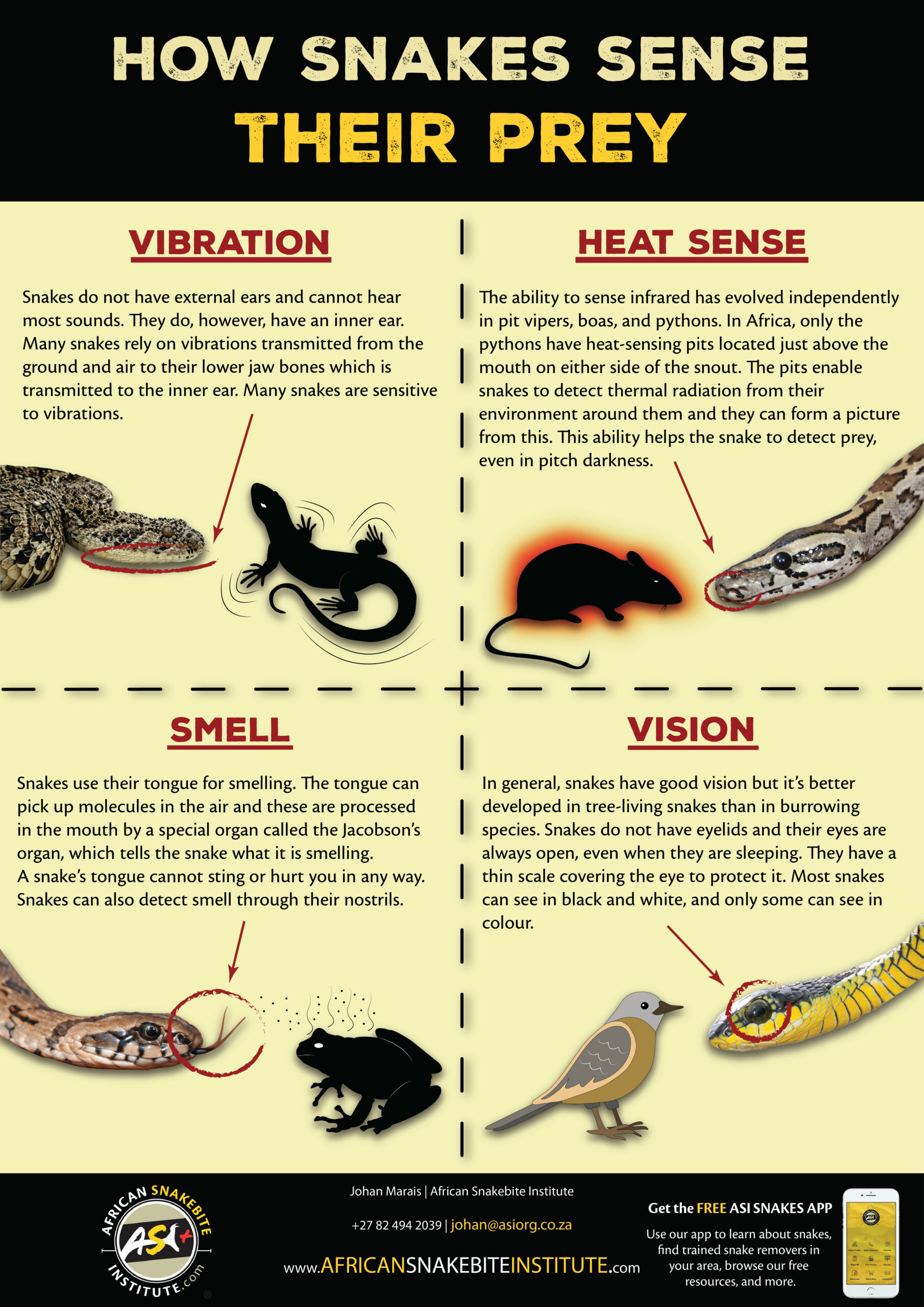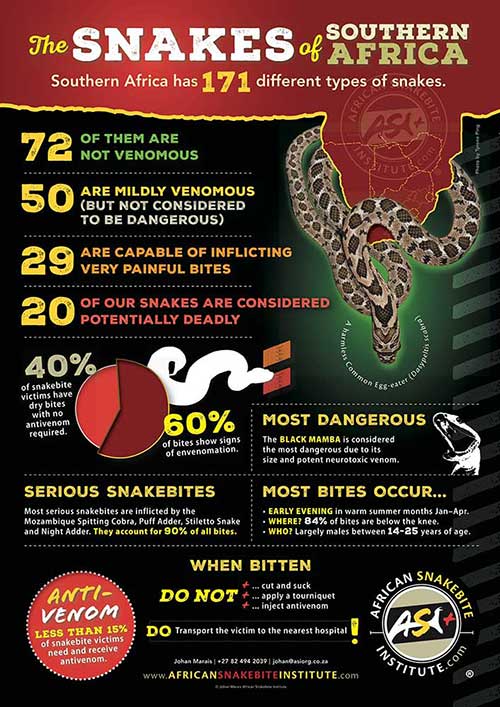PLEASE NOTE. Our offices will be closed from the 12th of December 2025 – until the 5th of January 2026. Last date for orders will be the 8th of December 2025. Any orders placed after the 8th of December 2025, will only be dispatched after the 5th of January 2026.
 How snakes sense their prey
How snakes sense their prey
Vision:
In general, snakes have good vision but it’s better developed in tree-living snakes than in burrowing species. Snakes do not have eyelids, and their eyes are always open, even when they are sleeping. They have a thin scale covering the eye to protect it. Most snakes can see in black and white, and only some can see in colour.
Vibration:
Snakes do not have any ears, so they cannot hear any sounds. They rely on detecting vibrations transmitted from the ground to their lower jaw bones. This means that snakes can’t hear you scream, but they could feel your footsteps if you walk by close to them. Snakes are very sensitive to these vibrations.
Smell:
Snakes use their tongue for smelling. The tongue can pick up molecules in the air, and these are processed in the mouth by a special organ called the Jacobson’s organ, which tells the snake what it is smelling. A snake’s tongue cannot sting or hurt you in any way. Snakes can also detect smell through their nostrils.
Heat Sense:
The ability to sense infrared has evolved independently in pit vipers, boas, and pythons. In Africa, only the pythons have heat-sensing pits located just above the mouth on either side of the snout. The pits enable snakes to detect thermal radiation from their environment around them and they can form a picture from this. This ability helps the snake to detect prey, even in pitch darkness.

Search
Shopping Cart
CONTACT US:
Product enquiries:
Caylen White
+27 60 957 2713
info@asiorg.co.za
Public Courses and Corporate training:
Michelle Pretorius
+27 64 704 7229
courses@asiorg.co.za
Featured Products
-
 ASI Book Combo 2
ASI Book Combo 2
R2,210.00Original price was: R2,210.00.R1,880.00Current price is: R1,880.00. -
 Rangers Book Combo 2
Rangers Book Combo 2
R2,080.00Original price was: R2,080.00.R1,870.00Current price is: R1,870.00. -
 ASI Lite Combo 3
R1,575.00
ASI Lite Combo 3
R1,575.00


